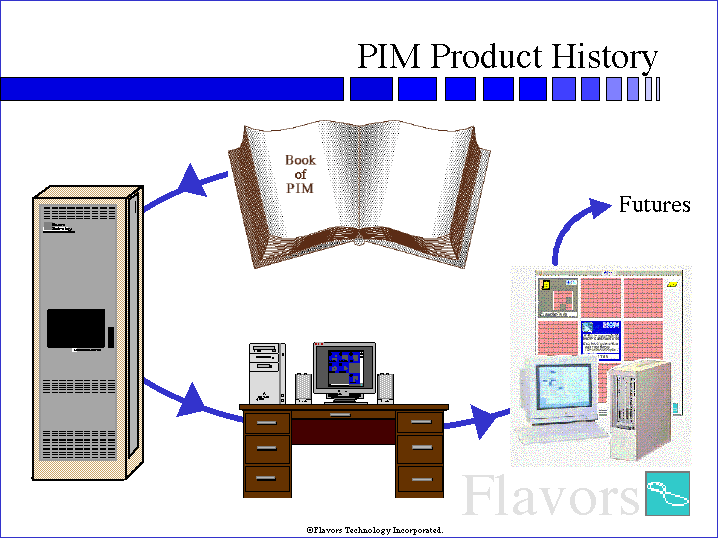| Flavors Technology Incorporated |
 |
Slide 4 of 24
The vision of the PIM and Paracell came about in 1988. Dick Morley and a team of engineers wrote the "Book of PIM." This tome described the architecture and requirements of the hardware and software, drawing from the disciplines of real-time, artificial intelligence, and complexity theory.
The first version of the product was released in 1991, and was based on a proprietary architecture assembled of standard components. This version, the PIM-F, was designed for deployed industrial applications. It featured a fixed frame rate of 60Hz, and provided from 512to 16,384 processing cells. This unit was installed in General Motors, EPRI, and the University of Tokyo. This controller was also the controller of choice for the ill-fated Superconducting Supercollider in Texas.
In 1993, the product was moved to a desktop version. Using an accelerator card, a desktop PC could host from 125 - 1000 processing cells running at a variable frame rate, from 60Hz to 15Hz. Named RocketPIM, this version was installed at Central JR in Japan, and at Samsung Electronics in Korea.
In 1995, the VME-based version of the product, the PowerPIM, was released. Based on the PowerPC RISC processor, this version was more suited to the realities of the real-time and industrial markets as the PIM was logically and physically separated from the programming workstation. This current version provides up to 8,000 processing cells running at a fixed frame rate. There are over 200 of these systems installed today.